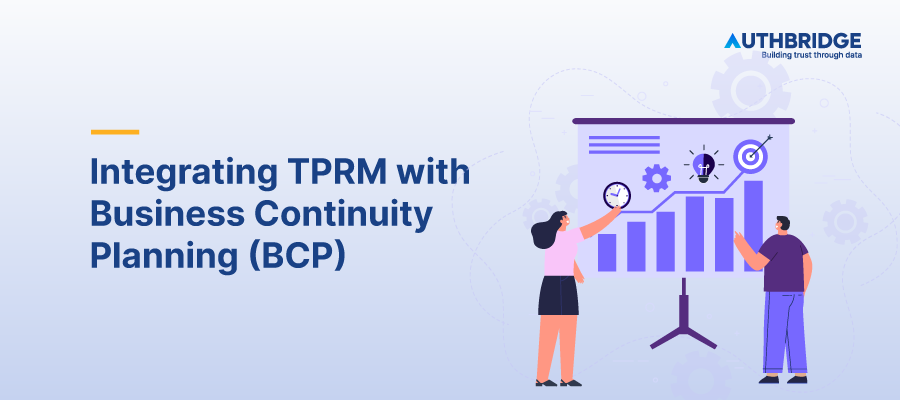Introduction
In today’s interconnected world, the resilience of third-party vendors is integral to the seamless operation of businesses, particularly in a dynamic and fast-evolving market like India. The integration of Third-Party Risk Management (TPRM) with Business Continuity Planning (BCP) ensures that businesses can maintain critical operations even in the face of disruptions, be they natural disasters, political upheavals, or global pandemics.
The Importance of Resilient Third-Party Relationships
For Indian businesses, which often rely heavily on a network of suppliers, service providers, and partners, the resilience of these third parties is not just a matter of operational efficiency but a critical component of strategic risk management. Integrating TPRM with BCP helps in identifying and mitigating risks associated with third-party engagements, ensuring that these partnerships do not become a weak link in the business continuity chain.
The Impact of Disruptions on Indian Businesses
The Indian business landscape, with its unique challenges including infrastructural issues, regulatory changes, and socio-economic factors, is particularly vulnerable to disruptions. The recent global events have underscored the importance of having robust BCP measures that include a comprehensive assessment and management of third-party risks. Without such integration, businesses may find themselves unable to operate efficiently or meet their obligations to customers and stakeholders during crises.
Assessing Third-Party Risks in Business Continuity Planning
Identifying Critical Third-Party Vendors
The first step in integrating TPRM with BCP involves identifying which third-party vendors are critical to your business operations. These are vendors whose services or products are essential for maintaining your core business functions, especially during disruptions.
Strategy: Develop criteria for identifying critical vendors based on factors such as service delivery dependencies, the impact of potential disruptions on operations, and the complexity of replacing the vendor.
Conducting Risk Assessments for Third-Party Vendors
Once critical vendors are identified, conduct detailed risk assessments to evaluate the potential risks they pose to business continuity. This assessment should consider the vendor’s ability to deliver under various scenarios, including natural disasters, cyber-attacks, and other forms of disruption.
Developing Risk Mitigation Strategies
Based on the risk assessment, develop specific strategies to mitigate identified risks. This might involve diversifying vendors, establishing stronger contracts with risk-sharing clauses, or developing alternative supply chain routes.
Practical Tip: Ensure that your risk mitigation strategies are flexible and adaptable to changing scenarios. Regularly review and update these strategies to reflect the evolving risk landscape and business priorities.
Ensuring Third-Party Resilience During Disruptions
Building resilience into third-party relationships is crucial for maintaining business continuity during disruptions. This section delves into the strategies for establishing effective communication protocols, implementing flexible contractual agreements, and leveraging technology for continuous risk monitoring.
Establishing Communication Protocols with Third Parties
Effective communication is key to managing third-party relationships during disruptions. Establish clear communication protocols that outline how and when vendors should report potential disruptions and their impact on service delivery.
Implementing Flexible Contractual Agreements
Contracts with third-party vendors should include clauses that address service expectations during disruptions. This could involve predefined contingency plans, service level adjustments, and penalties for non-compliance.
Case Study: A major Indian e-commerce company renegotiated contracts with its logistics providers to include disaster recovery plans. This strategic move ensured uninterrupted service during the nationwide lockdown, contributing to the company’s resilience.
Leveraging Technology for Third-Party Risk Monitoring
Technology plays a critical role in monitoring third-party risk and ensuring operational resilience. Utilize software solutions that provide real-time visibility into third-party operations, enabling proactive management of potential disruptions.
Real-life Example: An Indian pharmaceutical company used cloud-based supply chain visibility platforms to monitor its vendors’ operations during the COVID-19 pandemic. This technology-enabled approach allowed the company to anticipate supply chain disruptions and adjust its strategies accordingly.
Maintaining Critical Operations Amidst Disruptions
The ultimate goal of integrating TPRM with BCP is to maintain critical business operations during any disruption. This involves prioritizing critical business functions, developing contingency plans with third-party vendors, and drawing on case studies of successful BCP and TPRM integration.
Prioritizing Critical Business Functions
Identify and prioritize business functions that are critical to your operations. This prioritization should guide the development of contingency plans and the allocation of resources to ensure these functions can continue during disruptions.
Strategy: Conduct a business impact analysis (BIA) to determine which functions must be sustained to maintain operational viability and compliance with legal and regulatory requirements.
Developing Contingency Plans with Third-Party Vendors
Work with critical third-party vendors to develop specific contingency plans for maintaining essential services during disruptions. These plans should be integrated into your broader BCP and tested regularly.
Challenges and Solutions in Integrating TPRM with Business Continuity Planning
Integrating TPRM with BCP in India faces unique challenges, including navigating regulatory complexities and overcoming infrastructural and technological barriers. This section explores these challenges and offers expert insights into effective solutions.
Navigating Regulatory Challenges
India’s regulatory landscape can be complex, with varying requirements across states and sectors. Ensuring compliance while integrating TPRM and BCP requires a thorough understanding of applicable regulations and proactive engagement with regulatory bodies.
Expert Insight: Collaborate with legal and compliance experts to navigate the regulatory landscape effectively. Regularly update your BCP to reflect changes in regulations.
Overcoming Technical and Logistical Barriers
Technical and logistical barriers, such as inadequate infrastructure or lack of technological readiness, can hinder the effective integration of TPRM and BCP. Investing in technology and infrastructure upgrades is essential for overcoming these challenges.
Expert Insight: Leverage cloud technologies and digital platforms to enhance flexibility and resilience. These solutions can provide scalable and cost-effective options for managing third-party risks and maintaining business continuity.
Conclusion
Integrating TPRM with BCP is essential for ensuring business resilience, particularly in the face of disruptions. By assessing third-party risks, ensuring vendor resilience, maintaining critical operations, and navigating challenges with strategic solutions, Indian businesses can fortify their continuity plans. As we look to the future, the role of technology and strategic planning in TPRM and BCP integration will only grow, highlighting the need for ongoing innovation and adaptation in risk management practices.







